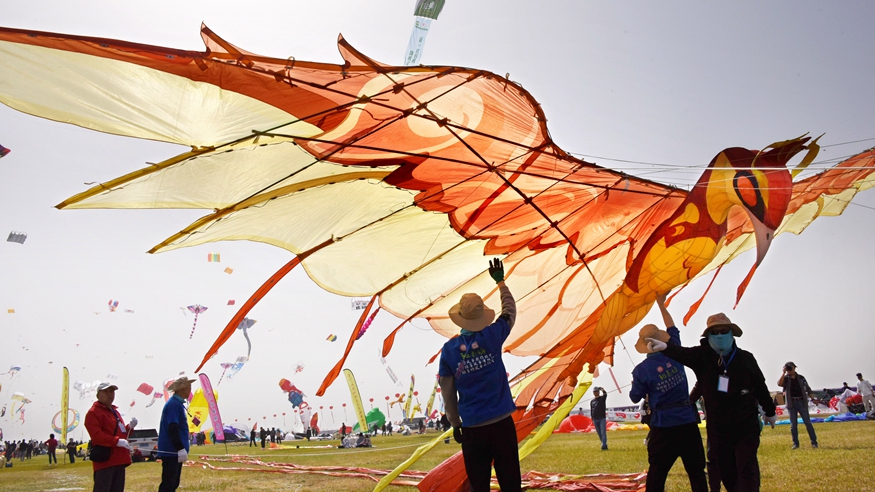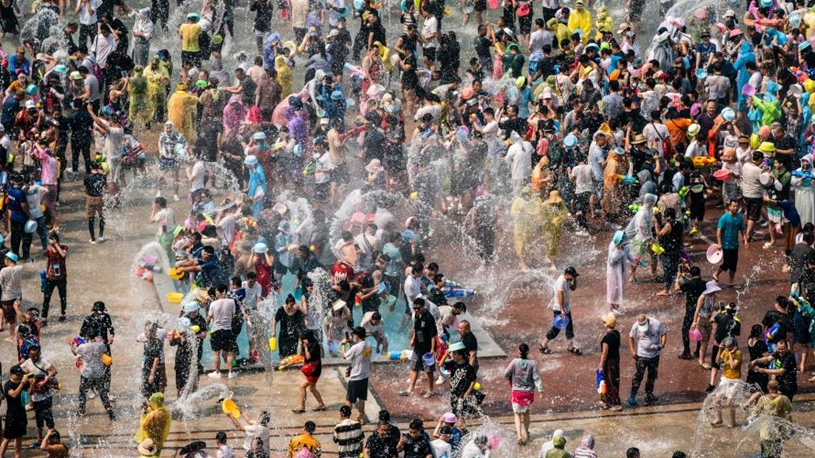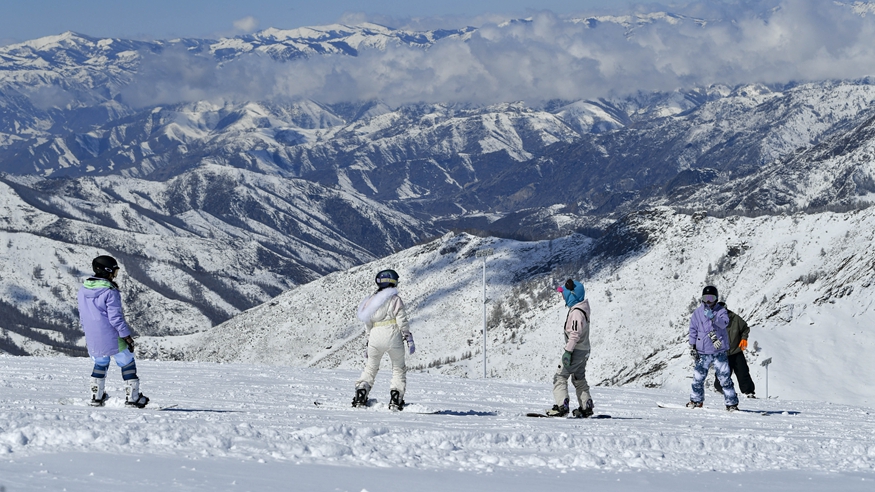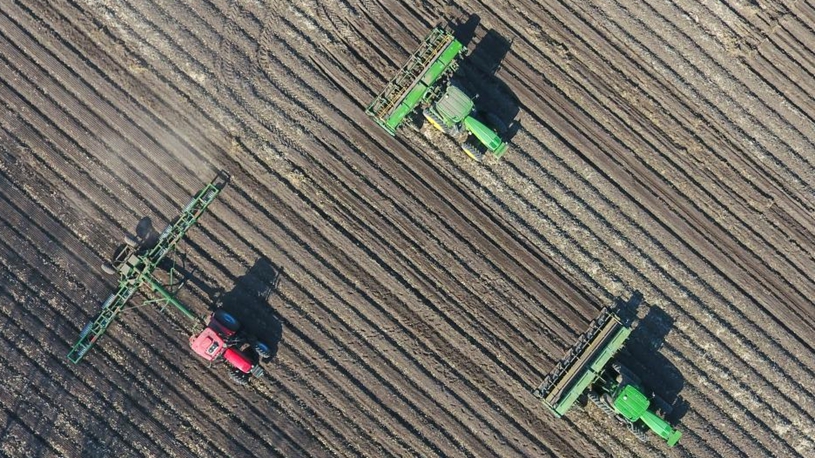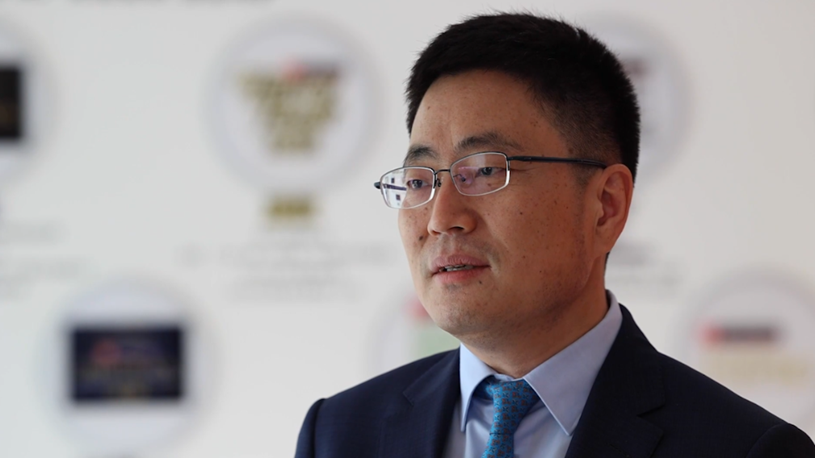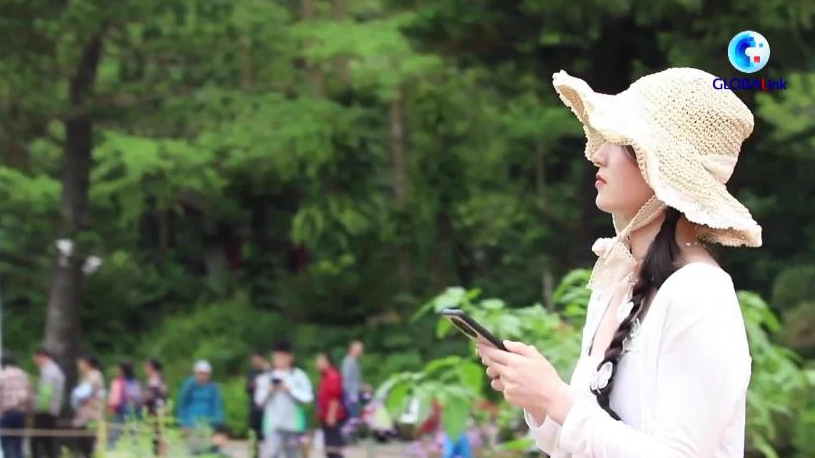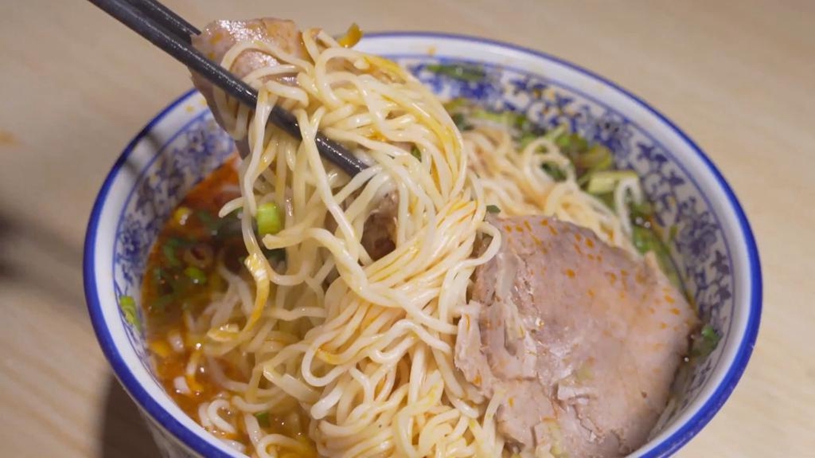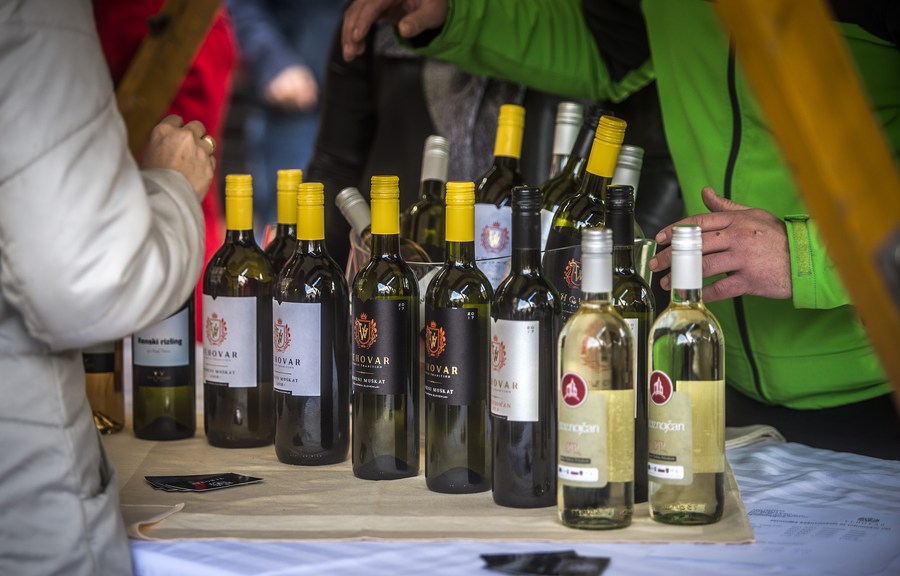
Exhibited bottles of wine are seen at Ljubljana Wine Route tasting event in central Ljubljana, Slovenia, on Nov. 10, 2018. (Xinhua/Matic Stojs)
The Klet Krsko Wine Cellar aims to significantly increase the sales to China in the coming years.
KRSKO, Slovenia, April 16 (Xinhua) -- Jure Grubar has lived with his father in their family vineyard since he was a toddler. Now a professional wine maker, he was appointed chief executive of the Klet Krsko (KK) Wine Cellar in 2019 and is responsible for the production of around 1.4 million liters of wine per year.
KK is the biggest producer of Cvicek, a unique wine with a protected trademark that can only be made in the region of Dolenjska in southeastern Slovenia.
"Cvicek is a traditional wine from the region that people drank when they were thirsty or needed strength for work. It is made from a combination of red and white grapes and has a light red color," Grubar, 39, told Xinhua in an interview.
Cvicek has a maximum 10 percent alcohol content so it does not burden the body with alcohol or sugar as much as most other wines, thus Grubar believes that Cvicek will gain more popularity in the coming years.
Before the COVID-19 pandemic, the cellar had already sold wine to Chinese restaurants. Now the cellar aims to significantly increase the sales to China in the coming years. "We have the equipment that allows us to double our production quickly if needed," Grubar said.
To this end, the cellar has been cooperating with researchers at Ljubljana University's School of Economics and Business, who study the China market and propose sales strategies.
Currently, the cellar exports only a fraction of its production, but Grubar said they plan to increase output by about 20 percent within five years, mostly by boosting exports around the world, especially to China.
KK is a cooperative business, which was established almost a hundred year ago and is now owned by about 300 local farmers. Although the cellar cultivates its own vineyards, it buys most of its grapes from local farmers, which means that about 200 families or some 800 people harvest the grapes for the cellar each autumn.
Though western Slovenia suffered its largest ever forest fire during the extremely hot and dry summer of 2022, the vineyards in the country's hilly southeastern region prospered thanks to more sun and less rain.
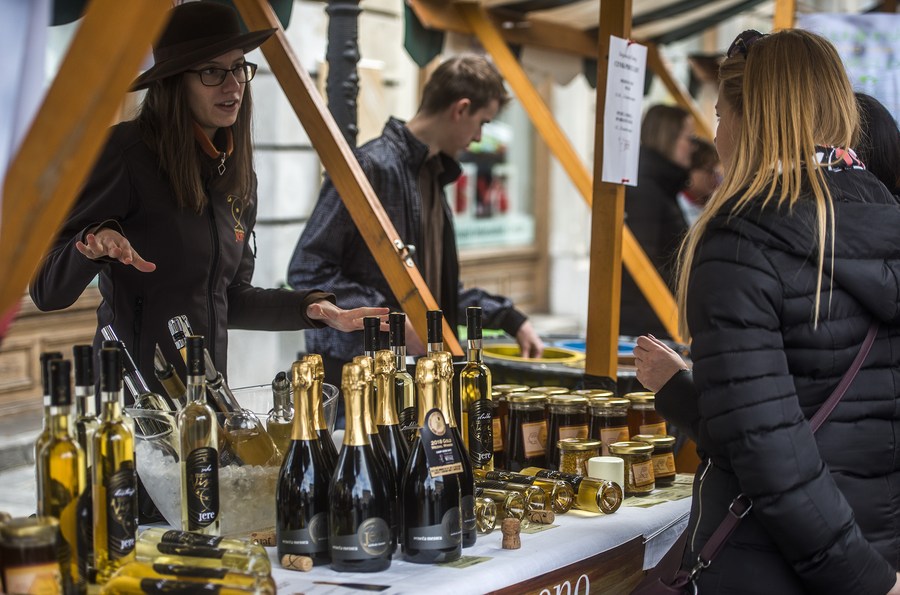
A woman introduces different sorts of wine to a visitor at Ljubljana Wine Route tasting event in central Ljubljana, Slovenia, on Nov. 10, 2018. (Xinhua/Matic Stojs)
"Most vineyards in our region are on hills, often on a very steep terrain, so making wine here is not easy. However, the local soil and climate enable us to produce fresh and fruity wines with a unique taste," Grubar said.
The region, which borders on Croatia, charms visitors with countless green hills covered by forests, vineyards and orchards. The cellar is located next to a state-owned medieval castle. Parts of the cellar, built in 1770, were purposely made for storing wine. The castle's name, Srajbarski Turn (literally Srajbar's Tower), was also an inspiration for Turn, the trademark name of the cellar's wine.

A man introduces different sorts of wine to visitors at Ljubljana Wine Route tasting event in central Ljubljana, Slovenia, on Nov. 10, 2018. (Xinhua/Matic Stojs)
The cellar offers a broad range of wines, including white, pink and sparkling wines, as well as rare late harvest wines. Many of the cellar's products have received international awards, including a silver medal at the Decanter World Wine Awards 2022 for the 2019 Modra Frankinja (Blaufrankisch) red wine. ■

